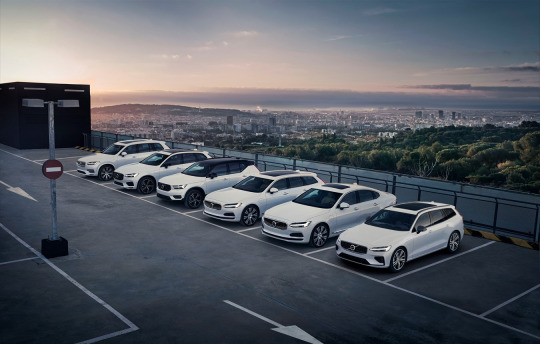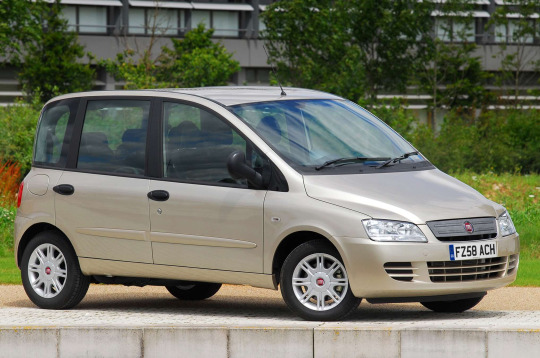#Functional Safety Products Market
Text
OPTİVİSER - GOLD

Welcome to Optiviser.com, your ultimate guide to navigating the complex world of electronics in 2024. As technology continues to evolve at a rapid pace, finding the right devices that suit your needs can be overwhelming. In this blog post, we’ll harness the power of AI to help you make informed choices with our comprehensive electronics comparison. We’ll take a closer look at the top smart home devices that are revolutionizing how we live and work, providing convenience and efficiency like never before. Additionally, we’ll offer expert laptop recommendations tailored to various lifestyles and budgets, ensuring you find the perfect match for your daily tasks.
AI-powered Electronics Comparison
In today's fast-paced technological landscape, making informed choices about electronics can be overwhelming. An AI-powered Electronics Comparison tool can help streamline this process by providing insights that cater to specific user needs. These advanced tools utilize algorithms that analyze product features, specifications, and user reviews, resulting in a tailored recommendation for buyers.
As we delve into the world of consumer technology, it's important to highlight the Top Smart Home Devices 2024. From smart thermostats to security cameras, these devices are becoming essential for modern households. They not only enhance convenience but also significantly improve energy efficiency and home safety.
For those looking for a new computer to enhance productivity or gaming experiences, consider checking out the latest Laptop Recommendations. Many platforms, including Optiviser.com, provide comprehensive comparisons and insights that can help consumers choose the best laptop suited to their needs, whether it’s for work, study, or leisure.
Top Smart Home Devices 2024
As we move into 2024, the landscape of home automation is evolving rapidly, showcasing an array of innovative gadgets designed to enhance comfort and convenience. In this era of AI-powered Electronics Comparison, selecting the right devices can be overwhelming, but we've highlighted some of the best Top Smart Home Devices 2024 that stand out for their functionality and user experience.
One of the most impressive innovations for this year is the latest AI-powered home assistant. These devices not only respond to voice commands but also learn your preferences over time, allowing them to offer personalized suggestions and perform tasks proactively. Imagine a device that can monitor your schedule and automatically adjust your home's temperature and lighting accordingly!
Moreover, security remains a top priority in smart homes. The Top Smart Home Devices 2024 include state-of-the-art security cameras and smart locks that provide robust protection while ensuring ease of access. With features like remote monitoring through your smartphone or integration with smart doorbells, keeping your home safe has never been easier. For more details on the comparisons and recommendations of these devices, you can check out Optiviser.com.
Laptop Recommendation
In today's fast-paced world, choosing the right laptop can be a daunting task. With numerous options available in the market, it's essential to consider various factors such as performance, portability, and price. At Optiviser.com, we provide an insightful guide to help you navigate through the vast array of choices. To streamline your decision-making process, we have developed an AI-powered Electronics Comparison tool that allows you to compare specifications and features of different laptops side by side.
This year, we have seen a surge in innovative laptops that cater to diverse needs. Whether for gaming, business, or everyday use, our top recommendations include models that excel in battery life, processing power, and display quality. For instance, consider the latest models from top brands, which have integrated the best features of Top Smart Home Devices 2024 trends, ensuring seamless connectivity and advanced functionalities.
Additionally, if you're looking for a laptop that can handle multitasking effortlessly, we suggest models equipped with the latest processors and ample RAM. Our detailed Laptop Recommendation section on Optiviser.com includes expert reviews and user feedback to help you choose a laptop that not only fits your budget but also meets your specific requirements.
674 notes
·
View notes
Text
Things to research before getting your first custom manual wheelchair
one of the biggest things I can recommend to anyone getting a new custom chair (but especially a first custom chair) is to understand all of the parts of a wheelchair and what they do. I decided to make a guide with wheelchair parts to research and places to look for information to make this process a little bit easier. additional link suggestions are welcome.
General resources:
Permobil - The Wheelchair Handbook
Motion Composites - Preparing for Your Wheelchair Evaluation: Before the Evaluation (Part 1)
Motion Composites - Preparing for Your Wheelchair Evaluation (Part 2)
1. Frame
Motion Composites - Folding vs Rigid Wheelchair Frames: How to Choose
Permobil - Manual wheelchairs: rigid and folding frames. How do you choose?
GTK - Oh what’s in a frame? Comparing Multiple Materials
Motion Composites - Wheelchairs: Carbon Fiber Versus Aluminum
2. Front frame angle
Motion Composites - Understanding the Impact of Rigid Wheelchair Front Frame Angle
Sunrise Medical - Rigid Frame Wheelchairs – Frame Angle and Inset
4. Seat dump
Permobil - Ergonomic Seating and Manual Wheelchairs
Spinlife - Wheelchair Back & Seat Angle
5. Caster size, style, and position
Motion Composites - Front Casters for Manual Wheelchairs Practical Guide
Sunrise Medical - Front Caster Position in Manual Wheelchairs
6. Caster forks
New Mobility - Caster Wheels and Forks
Sunrise Medical - Maneuverability in Manual Wheelchairs - What Fork to use?
New Mobility - Innovations: Emerging Trends in the Wheelchair Market (information about single sided forks)
7. Footplate
Motion Composites - Footrest Options to Support Function and Mobility
When Tania Talks - Active User Wheelchair Footplate Options
8. Calf strap
Spex Seating - Lower Leg Support Considerations in Wheelchair Seating
9. Seat pan
Permobil - Solid Seat Insert for Wheelchair: Taking a Closer Look at Cushion Components
10. Seat cushion
Permobil - What to Look for in Seating & Positioning Products
Permobil - How to Choose a Cushion in Long Term Care
Permobil - Cushion Geometry: Linear and Contoured
Freedom Mobility Center - Wheelchair Seat Cushions: 5 Tips for Choosing the Right One for You
Mobility Basics - Seat Cushion Rigidizer
Motion Composites - Selecting the Right Cushion for Your Wheelchair a Clinicians Guide
Motion Composites - Covering the Basics of Wheelchair and Back Support Covers
11. Seat belts
12. Clothing guards
Sherman Oaks Medical Equipment - Wheelchair Clothes Guards / Side Guards Guide
13. Arm rests
United Spinal Association - Wheelchair Armrests What Do They Really Do?
Spinlife - Wheelchair Arm Rest Choices
Motion Composites - Armrests: Getting the Support you Need
14. Back supports
Motion Composites - Solid vs Upholstery Backs
Mobility Management - How to Choose the Right Back Height for your Client
Freedom Mobility Center - Why a Solid Back is Preferred Over a Sling Back
Mobility Basics - Back Supports
Sunrise Medical - Tips for Selecting Prefabricated Wheelchair Backs
Motion Composites - Covering the Basics of Wheelchair and Back Support Covers
15. Head supports
16. Push handles
Motion Composites - Push Handles: Pushing Around
17. Wheels
Motion Composites - Rolling Along: The Importance of Rear Wheel Selection
Sunrise Medical - Comparing Wheelchair Wheel Spoke Options
Mobility Basics - Manual Wheelchair Wheels
18. Tires
New Mobility - Everything You Need to Know About Selecting the Right Wheelchair Tires
GTK - Solid versus Pneumatic Tyres
Mobility Basics - Manual Wheelchair Wheels
Motion Composites - Tire Selection: Balancing Performance and Maintenance
19. Brakes
Motion Composites - Wheel Locks: Unlocking Safety and Function
20. Push rims/Hand rims
Motion Composites - Getting a Grasp: Understanding the Impact of Hand Rims
DME Hub - Wheelchair Hand Rom Options and Factors to Consider
21. Anti-tip wheels
22. Camber
Motion Composites - Camber - Degrees of Performance
23. Center of Gravity
Motion Composites - Rear Wheel Position 101
538 notes
·
View notes
Note
why do usamerican anarchists even want to cook bathtub insulin like regulations on drug manufacturing just arent exploitative relationships
the only reason anyone ever does anything incorrectly is the profit motive. if you took away all safety regulations and threw a bunch of random people into a machine shop and asked them to build medical equipment they'd do so perfectly safely and correctly, because why would they Want to do otherwise?
i joke, obviously, but that's the thought process - it's fundamentally an extension of idealism: for a politics that otherwise completely ignores the material necessities and restrictions placed on political organisation and the measures they require to apply to the real world, in favour of, essentially 'if everyone just agrees with us our ideas will win', it shouldn't be that surprising that that extends to production.
in reality, of course, there are factors outside direct human control, and the implementation of safety regulations and inspections are an incredibly obvious and necessary measure - *but*, once you accept that, the question is then 'what good are safety regulations without any form of enforcement?', which, for anyone concerned with simply the task of bettering life for the working class, would prompt a response of 'oh, you're right, we'll need some form of enforcement, then.' for a lot of people, that's the end of their relationship with anarchism.
however, the underlying motives that generate these politics - as, in general, idealist political philosophies disconnected from reality don't simply spring up by themselves - aren't about the task of bettering life for the working class. fundamentally, the interests of these worldviews are those of the small-producer, the middle class: they promote a utopia where everyone is a small business owner (whether in a commune or a 'free market'), and, providing no real method to achieve these utopias, function mainly to drive these middle classes away from their character as labourers, and towards their privileges. the question of 'authority', a nebulous concept, has always been specifically the existence of any authority *over the small-producer's enterprise*. it's for *that* reason that, when the idea of 'authority' comes into contradiction with the task of improving the lives of the working people, some *do* decide that 'authority' is more important.
there is no such thing as a definite 'left' and 'right wing' - there are left wings and right wings of individual classes, but they both share more in class interest than they often do with their counterparts of other classes. libertarianism, in all its forms, is a middle class ideology, and shares its flaws - any jab against libertarians works just as well, 'who'll build the roads', 'would you need a driver's license', 'how will you ensure medicine is produced safely', etc.
when faced with these problems, people not married to the need to avoid 'authority' will simply accept the ideology is flawed - there are people who are pre-emptively 'anti-state', but fundamentally, their opponents are not 'pro-state', just practical. the anarchists are the only people coming to the table with a pre-existing, overriding position about 'authority' and the role of the state, and they're willing to abandon all practicalities to support it. functional regulations on medicine production *have* to be considered authoritarian, because that's the point of the ideology.
506 notes
·
View notes
Text
So I was playing around with an expanded version of this wlw vamp!Eddie snippet (tentatively titled heard you like magic) for Monsterfucker May because, well, 1) it’s pretty good incentive to write something I’d been thinking about anyway 2) I am procrastinating on a fuckton of work right now.
Anyway, I started jotting down some thoughts that wound up being practically a whole-ass essay, and the expanded fic definitely isn’t going to be posted before tomorrow, so…I thought I might as well post this. It’s not very exciting; it's about 1300 words of me ruminating on the worldbuilding/character decisions I’ve been making about adapting Steve’s gender.
The heard you like magic fic is really just me sort of iterating on the loose sketch of cisgirl!Steve I started noodling around with in feel how you fit around me. Obviously it’s not the same timeline at all; I hadn’t really thought through this AU very much, since it was spontaneously birthed from skimming the lyrics to “Red Wine Supernova” and getting inappropriately stuck on “her canine teeth in the side of my neck” but I’m using it to play with similar ideas.
I do think a very similar story to canon could have been created with cisgirl!Steve. (If female!Steve is trans, the timelines get a little complicated and there’s literally no way she could have socially transitioned and achieved an unquestioned popularity in the 80s. It could be a good and interesting story, but it would have fundamentally different beats.) Canon!Steve’s initial thematic/narrative function as the hot, popular boyfriend who embodies normality and social acceptance (at a cost) within the context of high-school-drama-turned-supernatural-horror could absolutely have worked with some of the genders shuffled; admittedly, it would likely have been received by audiences very differently. But from a purely thematic/structural perspective, yeah, I think the same story could have been told.
So the specific question I’m poking at here is: what does that Steve look like, if his largely unquestioned shifting relationship to masculinity becomes a largely unquestioned shifting relationship to femininity? Part of what makes him such an interesting character is how he navigates taking on a babysitter/caretaker role within the group, because that runs counter to his gendered expectations about who he is and what he’s good at. For a teenage girl, though, “babysitter/caretaker” is a pretty conventional role.
I’ve thought a lot about approaching this as “What would have to change to make female!Steve commercially viable?” Honestly, I do think the production machine would probably have killed her off as planned; she’d be too unlikeable. She’s hot and bitchy in a way that is simply unforgiveable in an 80s-inflected horror narrative.
But what if they didn’t, though? What’s the minimum amount of change needed to make Stephanie Harrington work in the story and world of Stranger Things?
If we’re cleaving as closely as possible to canon’s themes and structure, Nancy has to be male. Their relationship needs to represent convention and safety, because Nancy’s journey is partly about her inability to let things lie. For better and for worse, she’s not the kind of person who can pretend that everything’s okay when it’s not, and Steve exists to be the temptingly normative option.
Jonathan Byers is basically already Ally Sheedy in the Breakfast Club, so that’s straightforward enough: he’s a trope of the artsy “unsafe” alternative, the one Nancy’s parents wouldn’t approve of, but the one who understands and enables her rejection of easy answers. If we’re not concerning ourselves with marketing decisions, he could still be male and fit the same thematic role in M!Nancy’s arc, but that would change Steve’s journey pretty significantly.
I think it could still be a good story! There’s a lot of potential there. But if we want to keep Steve’s confrontation with Jonathan as a turning point for his character, it just works much better if Jonathan’s a conventional rival. The dynamics also play out pretty differently if M!Jonathan gets in a physical fight with F!Steve—it’s hard to imagine any version of Nancy being super chill about that. F!Steve is also slightly less likely to default to that kind of physical confrontation as socially acceptable/expected, although I could definitely see it similarly escalating to physical violence with F!Jonathan.
The Stobin dynamic more or less works with the genders exchanged. This is pre-Will and Grace; the concept of a “fag hag” existed but was not nearly as mainstream as it would become in a decade or two, so there wouldn't necessarily be a lot of expectations or models of what their relationship should look like. One minor shift: the public imagination had a much more specific concept of what gay men looked and acted like than it did for lesbians, so Steve would probably be a little more resistant and/or take a little longer to get it.
The Party can still keep their canon genders; I don’t think that would affect the older teens too much. It might shift the dynamic of Dustin seeing Steve as a role model, but I think that’s a sufficiently indirect/unstated part of their relationship that it could translate reasonably well. I do think Dustin might get a highly embarrassing and often-denied crush on female!Steve, but he absolutely would not admit it.
Max would probably be a little closer to F!Steve, since she’d have a bit less older-brother baggage, and less drawn to M!Nancy. Mike would hate F!Steve exactly the same amount, and neither Lucas nor Will seem to be that invested in canon!Steve anyway.
More generally, though, I don’t see F!Steve as taking refuge in “at least I’m a good babysitter,” because to some extent that would be expected. F!Steve probably didn’t babysit for spending money as a younger teen, but it wouldn’t be out of the question. I really cannot stress enough how much growing up in small-town midwest USA pre-Y2K was oriented towards training young girls for motherhood. They got explicit and implicit instructions that young boys simply did not.
I’m not completely convinced that F!Steve would be as inclined towards a big family as canon!Steve, either. For Steve, whose familial model is an almost wholly absent father, a big family is part of the fantasy of belonging. While I do tend to read him as having honest intentions about pulling his weight, he doesn’t have a very practical understanding of what childrearing is like, and anything he does above the bare minimum is going to be praised. F!Steve would be more keenly aware of the scrutiny she’d be under as a mother, as well as the sheer scale of labor involved. Also, she’d be much less likely to want to pop out six kiddos from her own uterus. The calculations are different.
I grew up in a very conservative area with girls whose primary worldly ambition was genuinely to become mothers. When we talked about “careers,” it was with the explicit understanding that it would be a side gig to help support their main role as a mother. Some of them do now literally have six children.
Steve does not strike me as that kind of person on a fundamental level. He has certain normative ideas about what family and relationships look like—his arc really is all about disrupting and complicating those ideas. In the context of F!Steve, though, I don’t think that thread of clinging to hegemonic norms would manifest in wanting a big family; it seems more likely to me that she’d have some vague ideas about two or three kids and a wealthy, attentive husband.
I also don’t necessarily see her being quite as keen to lean into a tank role. The “woman warrior” trope was gearing up for the cresting wave of girl-power third-wave feminism in the 90s, but it wasn’t quite there yet—certainly not for someone whose narrative category is “the conventional one.” I actually think that could be a good angle for F!Steve’s development; while canon!Steve has his established/normative role as the tank to counter the subversive dynamics of his role as caretaker, F!Steve could potentially flip those: it’s not weird or unexpected for her to babysit, although she might be surprised by how well she does with Dustin, but translating her athletic ability to combat could propel her towards accepting that she might not be 100% conventional after all.
Anyway, I really need to stop thinking about this and get back to the core of this story, which is “what if vampire!Eddie wildly underestimated how much of a monsterfucker Stevie is, and also what if they were both girls”
#virtually none of this will ever make its way into the text#it's just a fun little one-shot about a vampire who is also a girlfailure#and yet I insist on overcomplicating everything as usual!#also....yeah I haven't been around a whole lot#sorry! I'll probably start posting again around july when my most intense work stuff is wrapped up#I've also recently realized that I used to do a lot of writing on the tube/train...and now I drive everywhere. thanks USA.#stranger things meta
17 notes
·
View notes
Note
Do u know any reason why the Dodge Durango and Dodge Charger look kinda similar?
I see them on the streets all the time and I've noticed (at least the newer ones) have the same headlight and tail light design


Well, the short answer to that is "design language". The explanation of that short answer, however, is a bit more complicated than that, and is about why cars look the way they look - what makes them different, what makes them similar, what makes them change and how to tell them apart. So hop on under the Read More and come learn all that!
Design language is the sum of design rules and guidelines that make a brand's product range both distinct from others and coherent within itself. If you've ever recognized whose commercial it was, who printed the book, who manufactured the device, who designed the car, that was design language doing its job!
You know those "If [brand] made [thing]" renders you see out there? That's following a brand language: crossing what [thing] looks like, which is usually pretty well determined, with the much more nebulous concept of what [brand] looks like. Defining a design language is defining the answer to that second question.
So, let's look at the Dodge lineup in 2011 (the first year with both current Charger and current Durango).

There's a couple of key shared traits: the trapezoidal grille (facing downwards in 'friendly' cars and upwards in 'aggressive' ones), the small indentation in the middle of the hood, the single angular headlight housing containing two round lighting elements, and some more minute stuff.
Except one of these cars features none of that, because sometimes, when updating (and, especially, when bringing back) a model, the design traits of its ancestors are taken into account, and for the Challenger, Dodge's then-current design language was almost totally disregarded in favor of faithfulness to its 1970 ancestor.


Whereas the new Charger did the exact opposite, its 2006 revival being completely based on 2006 Dodge's design language, with extremely little left of the '60s original (I see the rear window shape and the beltline if I'm being Christmas generous). Of course, this already works towards the similarity we're getting at.


But the bulk of a car's design decisions are not about design language, but about the kind of car it has to be. A designer must contend with aerodynamics, safety requirements, customer needs and expectations, with the end result being that cars of the same segment will usually end up having the same basic proportions and largely overlapping silhouettes. See the cars below:

Sure, very different styles can produce a more angular or more soft outline (see the two cars in the background), but within the same era and segment many completely different cars will be almost indistinguishable between the wheels (see the two cars in the foreground).
So the most design freedom is usually found in lights and grilles, since those can be quite radically altered in shape and proportions without interfering much with functionality (unlike for example window shapes or rooflines), and even slight changes in them can alter the look and perception of a car, because we parse them similarly to faces, and thus they can make a car looks angry, sad, silly, goofy, or adorably gleeful.

So most often, the most distinctive features of a car -and by extension of a design language- are found in lights and grilles (the outline of the headlights, the inside arrangement, the grille's shape, proportion, pattern, etc.), with the rest of the car being shaped by general principles like "angular design", "simple, smooth lines" or the likes. So if you want to learn to recognize cars, lights and grilles are usually what you should focus on, as you need to be an expert for your average car's overall shape to tell you much more than its segment and decade (and perhaps market, but that's a longer conversation). That does explain, doesn't it, why lights and grilles are similar in Charger and Durango, two cars in very different segments designed to look aggressive in a distinctly Dodge way.

Let's exemplify this principle with three cars from the same segment, decade and country:
In the mid-00s, Audi introduced a tall, chrome-lined downward trapezoid grille that contained the number plate;
Mercedes had their classic grille -with the thick top chrome strip, small silver accents and the underlying middle line- and “merging circles” headlights;
BMWs still had their staple "kidney grilles" and their quad circular headlights now contained in a wide, flat shape with round, downwards curving edges.
So even when these brands made different cars in different segments, those key traits kept them perfectly recognizable as theirs.



As you see in Mercedes, a brand's designs can get very consistent - but it can also get very inconsistent, too. For one, you don't design for a manufacturer, you design for buyers, so the design will change with who the buyers are, what they want, what they're attracted to - and when that is pretty consistent within a brand you get a lineup like Volvo's...

...whereas if you have a brand whose buyers vary wildly in all metrics that matter, you get a lineup like Kia's.

(I love this picture because you keep thinking "Well those two look similar at least" and they keep turning out to be two versions of the same car.)
The lineup's styling is also going to be more cohesive the more precious brand recognition is for it: a Ferrari needs to look like a Ferrari because that's most of why people buy a Ferrari to begin with, whereas the last time a Skoda didn't look like a Skoda it literally called for advertising.
Design languages also change and evolve with time, of course, and that's an element at play in the observation that spurred this post: Charger and Durango look similar not just because they were designed with the intention of looking similar, but also because they were updated with the goal of remaining similar, and were made even more so by the use of similar solutions to modernize their looks.

You'll notice that this was just an update of lights, bumpers and grilles - and indeed, these are what's known as "facelifts": where a new generation is usually redesigned from the ground up or retains little more than the core structure, facelifts are instead intragenerational updates that stay clear of radical changes (at most, things like hood and fenders can get updated if new headlight shapes require it).
But as we covered, those are the parts that matter - so while something as little as a facelift can be absolutely impossible to notice...


(seriously, two of my neighbors have these and it took me weeks of seeing them side by side to notice differences)
...it can also be effective enough to carry a model into a new decade...


...ore even powerful enough to completely salvage a car's design, and by extension its fortunes.


However, of course, it can wield the opposite power just as well.

Christ.
Welp, no mistaking that for not a BMW now, is there.
But to be clear, while BMW's styling has completely gone down the gutter lately, don't get the impression that any brand at any time is beyond a miss in this regard.

So, to close, while there is merit to the claim that cars today seem all the same, as we've discussed that's only true -and for good reasons- when looking at them from a distance. But when a landscape seems depressingly monotonous, you just have to look closer. And so, getting closer, analyzing the traits that weren't dictated by their nature, the decisions that weren't made for them by external factors, looking at what of them was shaped by agency and not necessity, they will all reveal themselves to all be different and to all have a personality of their own (bland as it may be). And that personality will change over time: changes are normal within a life, and actually good - they're a sign that life has been long enough to outlive the trends and ideas that shaped it, and that it's open to the new ones that have blossomed since. Trying too hard to fit in or stand out or seeking change for its own sake without a clear direction can ruin something good, sure, but change can also be very positive: it can allow keeping up with the times, or even a transformation for the better that lets go of what didn't work and accentuates what was good - and often, when it's done right, the world rewards it. And none of this requires a distancing from heritage or family, or even identity. In fact, as seen with our two cars, change can make a family bond even tighter.
This year will bring lots of change. Here's hoping we all manage to make it change for the better.
So yeah, hopefully that answers your question, anonymous asker who may well have fucked off to Hollywood in the over month and a half it took me to get to this (whoopsie)!
Immense thanks to @ldub0775 for the effort and thought he joined me in pouring into this post, and to all followers reading this for sticking around into 2024 to witness that effort's fruits. Trust me, you will really like what's coming.
Links in blue are posts of mine about the topic in question: if you liked this post, you might like those - or the blog’s Discord server, linked in the pinned post!
#design language#car design#dodge charger#dodge durango#dodge challenger#audi#mercedes#bmw#volvo#kia#the great catchup
38 notes
·
View notes
Text

I.1.3 What is wrong with markets anyway?
A lot. Markets soon result in what are termed “market forces,” impersonal forces which ensure that the people in the economy do what is required of them in order for the economy to function. The market system, in capitalist apologetics, is presented to appear as a regime of freedom where no one forces anyone to do anything, where we “freely” exchange with others as we see fit. However, the facts of the matter are somewhat different, since the market often ensures that people act in ways opposite to what they desire or forces them to accept “free agreements” which they may not actually desire. Wage labour is the most obvious example of this, for, as we indicated in section B.4, most people have little option but to agree to work for others.
We must stress here that not all anarchists are opposed to the market. Individualist anarchists favour it while Proudhon wanted to modify it while retaining competition. For many, the market equals capitalism but this is not the case as it ignores the fundamental issue of (economic) class, namely who owns the means of production. Capitalism is unique in that it is based on wage labour, i.e. a market for labour as workers do not own their own means of production and have to sell themselves to those who do. Thus it is entirely possible for a market to exist within a society and for that society not to be capitalist. For example, a society of independent artisans and peasants selling their product on the market would not be capitalist as workers would own and control their means of production. Similarly, Proudhon’s competitive system of self-managed co-operatives and mutual banks would be non-capitalist (and socialist) for the same reason. Anarchists object to capitalism due to the quality of the social relationships it generates between people (i.e. it generates authoritarian ones). If these relationships are eliminated then the kinds of ownership which do so are anarchistic. Thus the issue of ownership matters only in-so-far it generates relationships of the desired kind (i.e. those based on liberty, equality and solidarity). To concentrate purely on “markets” or “property” means to ignore social relationships and the key aspect of capitalism, namely wage labour. That right-wingers do this is understandable (to hide the authoritarian core of capitalism) but why (libertarian or other) socialists should do so is less clear.
In this section of the FAQ we discuss anarchist objections to the market as such rather than the capitalist market. The workings of the market do have problems with them which are independent of, or made worse by, the existence of wage-labour. It is these problems which make most anarchists hostile to the market and so desire a (libertarian) communist society. So, even if we assume a mutualist (a libertarian market-socialist) system of competing self-managed workplaces, then communist anarchists would argue that market forces would soon result in many irrationalities occurring.
Most obviously, operating in a market means submitting to the profit criterion. This means that however much workers might want to employ social criteria in their decision making, they cannot. To ignore profitability would cause their firm to go bankrupt. Markets, therefore, create conditions that compel producers to decide things which are not be in their, or others, interest, such as introducing deskilling or polluting technology, working longer hours, and so on, in order to survive on the market. For example, a self-managed workplace will be more likely to invest in safe equipment and working practices, this would still be dependent on finding the money to do so and may still increase the price of their finished product. So we could point to the numerous industrial deaths and accidents which are due to market forces making it unprofitable to introduce adequate safety equipment or working conditions, (conservative estimates for industrial deaths in the USA are between 14,000 and 25,000 per year plus over 2 million disabled), or to increased pollution and stress levels which shorten life spans.
This tendency for self-managed firms to adjust to market forces by increasing hours, working more intensely, allocating resources to accumulating equipment rather than leisure time or consumption can be seen in co-operatives under capitalism. While lacking bosses may reduce this tendency in a post-capitalist economy, it will not eliminate it. This is why many socialists, including anarchists, call the way markets force unwilling members of a co-operatives make such unpleasant decisions a form of “self-exploitation” (although this is somewhat misleading, as there no exploitation in the capitalist sense of owners appropriating unpaid labour). For communist-anarchists, a market system of co-operatives “has serious limitations” as “a collective enterprise is not necessarily a commune — nor is it necessarily communistic in its outlook.” This is because it can end up “competing with like concerns for resources, customers, privileges, and even profits” as they “become a particularistic interest” and “are subjected to the same social pressures by the market in which they must function.” This “tends increasingly to encroach on their higher ethical goals — generally, in the name of ‘efficiency’, and the need to ‘grow’ if they are to survive, and the overwhelming temptation to acquire larger earnings.” [Murray Bookchin, Remaking Society, pp. 193–4]
Similarly, a market of self-managed firms would still suffer from booms and slumps as the co-operatives response to changes in prices would still result in over-production (see section C.7.2) and over-investment (see section C.7.3). While the lack of non-labour income would help reduce the severity of the business cycle, it seems unlikely to eliminate it totally. Equally, many of the problems of market-increased uncertainty and the destabilising aspects of price signals discussed in section I.1.5 are just as applicable to all markets, including post-capitalist ones.
This is related to the issue of the “tyranny of small decisions” we highlighted in section B.6. This suggests that the aggregate effect of individual decisions produces social circumstances which are irrational and against the interests of those subject to them. This is the case with markets, where competition results in economic pressures which force its participants to act in certain ways, ways they would prefer not to do but, as isolated individuals or workplaces, end up doing due to market forces. In markets, it is rational for people try to buy cheap and sell dear. Each tries to maximise their income by either minimising their costs or maximising their prices, not because they particularly want to but because they need to as taking into account other priorities is difficult as there is no means of finding them out and deeply inadvisable as it is competitively suicidal as it places burdens on firms which their competitors need not face.
As we noted in section E.3, markets tend to reward those who act in anti-social ways and externalise costs (in terms of pollution and so on). In a market economy, it is impossible to determine whether a low cost reflects actual efficiency or a willingness to externalise, i.e., impose costs on others. Markets rarely internalise external costs. Two economic agents who strike a market-rational bargain between themselves need not consider the consequences of their bargain for other people outside their bargain, nor the consequences for the earth. In reality, then, market exchanges are never bilateral agreements as their effects impact on the wider society (in terms of, say, pollution, inequality and so on). This awkward fact is ignored in the market. As the left-wing economist Joan Robinson put it: “In what industry, in what line of business, are the true social costs of the activity registered in its accounts? Where is the pricing system that offers the consumer a fair choice between air to breath and motor cars to drive about in?” [Contribution to Modern Economics, p. 10]
While, to be fair, there will be a reduced likelihood for a workplace of self-employed workers to pollute their own neighbourhoods in a free society, the competitive pressures and rewards would still be there and it seems unlikely that they will be ignored, particularly if survival on the market is at stake so communist-anarchists fear that while not having bosses, capitalists and landlords would mitigate some of the irrationalities associated with markets under capitalism, it will not totally remove them. While the market may be free, people would not be.
Even if we assume that self-managed firms resist the temptations and pressures of the market, any market system is also marked by a continuing need to expand production and consumption. In terms of environmental impact, a self-managed firm must still make profits in order to survive and so the economy must grow. As such, every market system will tend to expand into an environment which is of fixed size. As well as placing pressure on the planet’s ecology, this need to grow impacts on human activity as it also means that market forces ensure that work continually has to expand. Competition means that we can never take it easy, for as Max Stirner argued, ”[r]estless acquisition does not let us take breath, take a calm enjoyment. We do not get the comfort of our possessions … Hence it is at any rate helpful that we come to an agreement about human labours that they may not, as under competition, claim all our time and toil.” [The Ego and Its Own, p. 268] Value needs to be created, and that can only be done by labour and so even a non-capitalist market system will see work dominate people’s lives. Thus the need to survive on the market can impact on broader (non-monetary) measures of welfare, with quality of life falling as a higher GDP is created as the result of longer working hours with fewer holidays. Such a regime may, perhaps, be good for material wealth but it is not great for people.
The market can also block the efficient use of resources. For example, for a long time energy efficient light-bulbs were much more expensive than normal ones. Over the long period, however, they used far less energy than normal ones, meaning less need to produce more energy (and so burn coal and oil, for example). However, the high initial price ensured that most people continued to use the less efficient bulbs and so waste resources. Much the same can be said of alternative forms of energy, with investment in (say) wind energy ignored in favour of one-use and polluting energy sources. A purely market system would not allow decisions which benefit the long-term interests of people to be made (for example, by distributing energy-efficient light-bulbs freely or at a reduced cost) as these would harm the profits of those co-operatives which tried to do so.
Also, markets do not reflect the values of things we do not put a price upon (as we argued in section B.5). It cannot protect wilderness, for example, simply because it requires people to turn it into property and sell it as a commodity. If you cannot afford to visit the new commodity, the market turns it into something else, no matter how much you value it. The market also ignores the needs of future generations as they always discount the value of the long term future. A payment to be made 1,000 years from now (a mere speck in geological time) has a market value of virtually zero according to any commonly used discount rate. Even 50 years in the future cannot be adequately considered as competitive pressures force a short term perspective on people harmful to present and future generations, plus the ecology of the planet.
Then there are corrosive effects of the market on human personalities. As we have argued elsewhere (see section B.1.3), competition in a free market creates numerous problems — for example, the creation of an “ethics of mathematics” and the strange inversion of values in which things (property/money) become more important than people. This can have a de-humanising effect, with people becoming cold-hearted calculators who put profits before people. This can be seen in capitalism, where economic decisions are far more important than ethical ones — particularly as such an inhuman mentality can be rewarded on the market. Merit does not necessarily breed success, and the successful do not necessarily have merit. The truth is that, in the words of Noam Chomsky, “wealth and power tend to accrue to those who are ruthless, cunning, avaricious, self-seeking, lacking in sympathy and compassion, subservient to authority and willing to abandon principle for material gain, and so on … Such qualities might be just the valuable ones for a war of all against all.” [For Reasons of State, pp. 139–140]
Needless to be said, if the market does reward such people with success it can hardly be considered as a good thing. A system which elevates making money to the position of the most important individual activity will obviously result in the degrading of human values and an increase in neurotic and psychotic behaviour. Little wonder, as Alfie Kohn has argued, competition can have serious negative effects on us outside of work, with it damaging both our personal psychology and our interpersonal relationships. Thus competition “itself is responsible for the development of a lower moral standard” which places winning at any cost above fairness and justice. Kohn quotes Nathan Ackerman, the father of family therapy, who noted that the “strife of competition reduces empathic sympathy, distorts communication, impairs the mutuality of support and sharing, and decreases the satisfaction of personal need.” [No Contest, p. 163 and pp. 142–3] Thus, the market can impoverish us as individuals, sabotaging self-esteem, promoting conformity, ruining relationships and making us less than what we could be. This is a problem of markets as such, not only capitalist ones and so non-capitalist markets could make us less human and more a robot.
All market decisions are crucially conditioned by the purchasing power of those income groups that can back their demands with money. Not everyone can work (the sick, the very old, children and so forth) and for those who can, personal circumstances may impact on their income. Moreover, production has become so interwoven that it “is utterly impossible to draw a distinction between the work of each” and so we should “put the needs above the works, and first of all to recognise the right to live, and later on the right to well-being for all those who took their share in production.” This is particularly the case as “the needs of the individual, do not always correspond to his works” — for example, “a man of forty, father of three children, has other needs than a young man of twenty” and “the woman who suckles her infant and spends sleepless nights at its bedside, cannot do as much work as the man who has slept peacefully.” [Kropotkin, Conquest of Bread, p. 170 and p. 171] This was why communist-anarchists like Kropotkin stressed the need not only to abolish wage-labour but also money, the wages system.
So it goes without saying that purchasing power (demand) and need are not related, with people often suffering simply because they do not have the money required to purchase, say, health care, housing or food for themselves or their families. While economic distress may be less in a non-capitalist market system, it still would exist as would the fear of it. The market is a continuous bidding for goods, resources, and services, with those who have the most purchasing power the winners. This means that the market system is the worst one for allocating resources when purchasing power is unequally distributed (this is why orthodox economists make the convenient assumption of a “given distribution of income” when they try to show that a capitalist allocation of resources is the best one via “Pareto optimality”). While a mutualist system should reduce inequality drastically, it cannot be assumed that inequalities will not increase over time. This is because inequalities in resources leads to inequalities of power on the market and, assuming self-interest, any trade or contract will benefit the powerful more than the powerless, so re-enforcing and potentially increasing the inequalities and power between the parties. Similarly, while an anarchist society would be created with people driven by a sense of solidarity and desire for equality, markets tend to erode those feelings and syndicates or communes which, thanks to the resources they control (such as rare raw materials or simply the size of their investments reducing competitive pressures) have an advantage on the market may be tempted to use their monopoly power vis-à-vis other groups in society to accrue more income for themselves at the expense of less fortunate syndicates and communes. This could degenerate back into capitalism as any inequalities that exist between co-operatives would be increased by competition, forcing weaker co-operatives to fail and so creating a pool of workers with nothing to sell but their labour. The successful co-operatives could then hire those workers and so re-introduce wage labour. So these possibilities could, over time, lead to a return a post-capitalist market system to capitalism if the inequalities become so great that the new rich become so alienated from the rest of society they recreate wage-labour and, by necessity, a state to enforce a desire for property in land and the means of production against public opinion.
All this ensures that the market cannot really provide the information necessary for rational-decision making in terms of ecological impact as well as human activity and so resources are inefficiently allocated. We all suffer from the consequences of that, with market forces impoverishing our environment and quality of life. Thus are plenty of reasons for concluding that efficiency and the market not only do not necessarily coincide, but, indeed, necessarily do not coincide. Indeed, rather than respond to individual needs, the market responds to money (more correctly, profit), which by its very nature provides a distorted indication of individual preferences (and does not take into account values which are enjoyed collectively, such as clean air, or potentially enjoyed, such as the wilderness a person may never visit but desires to see exist and protected).
This does not mean that social anarchists propose to “ban” the market — far from it. This would be impossible. What we do propose is to convince people that a profit-based market system has distinctly bad effects on individuals, society and the planet’s ecology, and that we can organise our common activity to replace it with libertarian communism. As Max Stirner argued, competition “has a continued existence” because “all do not attend to their affair and come to an understanding with each other about it … . Abolishing competition is not equivalent to favouring the guild. The difference is this: In the guild baking, etc., is the affair of the guild-brothers; in competition, the affair of chance competitors; in the union, of those who require baked goods, and therefore my affair, yours, the affair of neither guildic nor the concessionary baker, but the affair of the united.” [Op. Cit., p. 275]
Therefore, social anarchists do not appeal purely to altruism in their struggle against the de-humanising effects of the market, but also to to egoism: the simple fact that co-operation and mutual aid is in our best interests as individuals. By co-operating and controlling “the affairs of the united,” we can ensure a free society which is worth living in, one in which the individual is not crushed by market forces and has time to fully develop his or her individuality and uniqueness:
“Solidarity is therefore the state of being in which Man attains the greatest degree of security and wellbeing; and therefore egoism itself, that is the exclusive consideration of one’s own interests, impels Man and human society towards solidarity.” [Errico Malatesta, Anarchy, p. 30]
In conclusion then, communist-anarchists argue that even non-capitalist markets would result in everyone being so busy competing to further their “self-interest” that they would loose sight of what makes life worth living and so harm their actual interests. Ultimately, what counts as self-interest is shaped by the surrounding social system. The pressures of competing may easily result in short-term and narrow interests taking precedence over richer, deeper needs and aspirations which a communal system could allow to flourish by providing the social institutions by which individuals can discuss their joint interests, formulate them and act to achieve them. That is, even non-capitalist markets would result in people simply working long and hard to survive on the market rather than living. If one paradox of authoritarian socialism is that it makes everyone miserable by forcing them to altruistically look out for the happiness of others, market-based libertarian socialism could produce the potential paradox of making everyone miserable by the market forcing them to pursue a limited notion of self-interest which ensures that they do not have the time or opportunity to really be happy and at one with themselves and others.
In other words, bosses act as they do under capitalism in part because markets force them to. Getting rid of bosses need not eliminate all the economic pressures which influence the bosses’ decisions and, in turn, could force groups of workers to act in similar ways. Thus a competitive system would undermine many of the benefits which people sought when they ended capitalism. This is why some socialists inaccurately call socialist schemes of competing co-operatives “self-managed capitalism” or “self-exploitation” — they are simply drawing attention to the negative aspects of markets which getting rid of the boss cannot solve. Significantly, Proudhon was well aware of the negative aspect of market forces and suggested various institutional structures, such as the ago-industrial federation, to combat them (so while in favour of competition he was, unlike the individualist anarchists, against the free market). Communist anarchists, unsurprisingly, argue that individualist anarchists tend to stress the positive aspects of competition while ignoring or downplaying its negative sides. While, undoubtedly, capitalism makes the negative side of competition worse than it could be it does not automatically follow that a non-capitalist market would not have similar, if smaller, negative aspects to it.
#anarchist society#practical#practical anarchism#practical anarchy#faq#anarchy faq#revolution#anarchism#daily posts#communism#anti capitalist#anti capitalism#late stage capitalism#organization#grassroots#grass roots#anarchists#libraries#leftism#social issues#economy#economics#climate change#climate crisis#climate#ecology#anarchy works#environmentalism#environment#solarpunk
15 notes
·
View notes
Text
Starting Production🎉🥂
ZippOS is an alternate operating system for stand alone “spacial computing” devices. The goal of this project is to provide end users, who at their own discression, void their warranties to replace pre-packaged software bundled with their hardware. As the lead developer of ZippOS, and as an end user of a “spacial computer”, I am displeased with the current operating software, and the decisions of parent companies that distribute these products are inheriently unstable, brown-nosing share holders and consumers, and completely unaligned with the end users. As these devices are marketed as computers, I want to provide software for said computers as a choice for the end-users who feel the same as I do.
ZippOS will be a lighter(get it?), faster booting operating system built from scratch with Rust-Lang and some ARM/RISC-V assembly code to replace both the BIOS (ZIOS) and the operating system. The operating system’s goal is to have the same user functionality and multimedia multi-instancing in a mixed reality setting, citing BeOS/HaikuOS as inspiration. This operating system will have security and graceful degradation as the main focus for user safety because the main enemy for ZippOS is the companies who made the stock software it replaces on the end-user’s spacial computer. Users can also enjoy various stimulating options for navigating the software (i.e. “rolodex” style hub menus, table-top program/application storefront, “grabbing” and “throwing” programs/screens to be cast/mirrored to and from realspace and cyberspace, etc). ZippOS is a project software operating system under development, and currently has no plans to publicly publish to the open net, nor are there any current plans to open-source the software.
#ZippOS#Zipp-OS#Zipp OS#rustlang#rust-lang#operatingsystem#OS#linux#assembly language#assembly programming#riscv#arm64#mixed reality#virtual reality
7 notes
·
View notes
Text
Collaborator: Content & Influencer Marketing Marketplace, Unlocking Revenue with Content
Turn your content into Revenue!
In today's digital landscape, maximizing the reach of your content is crucial for success. Collaborator offers a comprehensive solution to turn your content into revenue through strategic partnerships with carefully selected websites and Telegram channels.

Key Features:
Wide Reach: Access to 30,887 high-quality sites and 2,890 Telegram channels in 143 countries and 50 languages.
Data-Driven Selection: Utilize factual data confirmed by Google Analytics and integrate with Ahrefs for comprehensive insights.
Low Fees: Enjoy affordable rates and receive assistance in choosing the most suitable sites for your content.
Data Privacy: Ensuring the security of your content and transactions is a top priority.


Advantages of Collaborator:
Speed: Rapid processes from site selection to deal processing, with an average turnaround time of just 2 days.
Quality Selection: Choose from a wide array of high-quality sites, filtered by traffic, domain rating (DR), and other SEO parameters.
Integration: Seamlessly integrate with Ahrefs and Serpstat to access essential metrics within the Collaborator interface.
Security: Ensure the safety of your content with secure transactions and monitoring.
Transparency: Gain clarity on where your content will be published, ensuring alignment with your objectives.
Guest Posting Made Easy:
Popular Strategy: Guest posting remains one of the most effective strategies to amplify your content's reach.
Challenges: It can be daunting to secure guest posting opportunities on reputable platforms without an established reputation.
Collaborator's Solution: With over 19,000 sites across 36 themes, Collaborator simplifies the process of finding relevant resources for guest posting.
Advantages: Enjoy swift processes, a vast selection of high-quality sites, integration with SEO tools, and enhanced security measures.
Ease of Use:
Intuitive Interface: Navigating the catalog and ordering guest post placements is simple and user-friendly.
Master Account Functionality: Ideal for managing outreach teams and optimizing collaboration efforts.
On-Page Optimization Checklist: Access a comprehensive checklist for auditing and improving your on-page SEO.
With its extensive network, data-driven approach, and user-friendly interface, Collaborator empowers content creators to thrive in the digital landscape.
Join Collaborator today and start turning your content into success!
Affiliate Disclosure: This post contains affiliate links. If you buy a product or service recommended on this blog, you won’t pay a penny more, but we may receive a small commission to help keep the blog running. Thank you so much for your support!
#guest post#contentmarketing#influencer marketing#digital marketing#content strategy#content marketing#seo#seo services#search engine optimization#search engine optimisation services#online marketing#digitalstrategy#content creator#colonialism#solar eclipse#mlp#hermitcraft#witchcraft#studio ghibli#911 abc#stardew valley#israel#wwe#dimension 20#genshin impact#fallout#sunrise#hades 2#wellness#the sandman
5 notes
·
View notes
Text
Glorious Masquerade spoilers #9

Idia’s Group - Star☆Team
We begin with Rook marveling the City of Flowers. He says the cityscape makes you feel the solid scent of history. It is also fragrant with flowers. Unfortunately, Idia is bedazzled by the beauty, flowers, light, and the festival. True introvert fashion, everything is so bright for him. Sweet Silver comments that it’s not really bright. And, Ruggie points out that everyone is dressed just like them. He thought the outfits were flashy, but now that he sees everyone, he feels quite at home.
Idia wants to get the walk over with as soon as possible. Yet, he notices on the map that there’s an antique market nearby. There may be items that suits everyone. Silver agrees that they should go. Rook is thrilled at the idea of an antique market. Just seeing the colorful tents is getting him excited. Ruggie wonders if there’ll be anything he can dig up. However, he suddenly comes across a hat, and is shocked to see what’s inside.

Ruggie notices the coins inside. Silver mentions that there are hats in front of every shop in the market. Ruggie wonders if someone lost the item, and questions if it would just be better to pick it up. Idia says he has no intention of delivering the hat to the owner.
Suddenly, Rollo appears looking none too happy. He tells the boys not to take the contents of the hat. Rook has aptly named Rollo “Roi du Mouchoir” (King of Handkerchief), and welcomes him with a bonjour. Rollo is a bit stunned into silence.😂 He asks Rook if that “Roi” is about him. Rook says “Yes! Of course.” And, Idia is like “He’s so shocked, of course it isn’t…”
Anyways, Silver says that Ruggie did not steal anything, clarifying that Ruggie only wondered if the hat was a lost item. Ruggie affirms Silver’s statement, excusing himself. Rollo says it’s so disrespectful. He explains to the group that when you buy a product from a street vendor, money is put in the hat.

Idia stutteringly asks if the hat functions as a cash register. Rollo says he is correct. Idia is too shocked that security is not a thing. Rollo asks Idia what he just said as he looks upset. He explains this is an old method passed down in the City of Flowers. You put the hat upside down, and placed the money inside. It is said that the lost money will be returned soon.
Ruggie says it’s a very safe story. Rollo agrees. He says it’s a culture of the city as proof of peace. Idia mutters that if a scoundrel like Ruggie comes along, it’ll be end of the roll. (A bad pull, basically.) Ruggie laughs and says he’s honored by the compliment. Rollo sadly agrees that there are unfaithful strangers. Especially more with the festival going on. Which is why the citizens are creating groups to keep the peace. Rollo then points out a couple of people acting as bodyguards.
Rollo explains that the bodyguards are comprised of volunteers in the city drawn to cause of the Righteous Judge. It’s said that the Righteous Judge worked diligently to improve the security of the city. After all, evil deeds must be stopped. Silver agrees with him saying it’s important to give those who have done bad deeds an opportunity to reflect on their mistakes.
Idia quietly wonders that even if they have bodyguards in the city, wouldn’t it just be better to have security cameras and sensors. He thinks it would be better to rely on machines for both money management and city safety. Not only would it provide accuracy, but people could rest. Unfortunately, Idia knows tradition doesn’t change much. (Ha…haha…of course, you’d know all about that, Idia…) Anyways, Rook says it’s a peaceful city created by the efforts and aspirations of many people.
Moving on, Rook says they should take a look around the market. They approach a vendor, and between he and Rook, they start spouting French words. Basic words, of course. Idia asks Rook if he’s originally from the Shaftlands. Rook replies that his hometown is in Sunset Savana. So, Idia asks why Rook is speaking so familiarly. Riggie adds that it’s as if Rook was born and raised in the City of Flowers. Rook says it’s an honor because the people of the city are bright, kind, and beautiful.
Rook goes on to say that he researched about the City of Flowers in advance, and found that it’s filled with many works of art. One of his favorite theatrical works is set in the City of Flowers. So, he’s excited for the new discovery. Idia feels himself losing to the powerful tension Rook emits😆

Rook happens to spot these beauties. It’s Quasimodo’s wood figures of himself and Esmeralda!💖 Ruggie thinks they look like old toys. Silver points out that there are similar dolls in the other shops. Rollo explains that the dolls are a specialty of the City of Flowers. Origins are unknown, but they seem to have been made from ancient times. Rollo comments that an old doll was also found in the bell tower of Noble Bell College. The dolls are also often sold with miniature wooden houses.
Silver notices it’s true. Rollo shows them a miniature version of NBC complete with the bell tower. Rook points out other familiar buildings including a replica of the city. Ruggie says in the end, it’s just a piece of wood. And the fact that children’s toys do not hold much value.
Idia is having none of that. He shouts at Ruggie to hold on a minute. Ruggie is surprised that Idia would suddenly yell at him. Idia tells Ruggie to take a look at the joint of the doll. Silver asks if something is wrong. Idia points out that the shoulders, elbows, and wrists can move.
Rollo says it’s a relatively new type of doll. In the past, one doll was carved from a square block of wood from a technique called woodcarving. The demand for sophistication gradually increased, making each part separately.

Idia says that it’s craftsmanship, and tells Ruggie the dolls are pretty elaborate. Ruggie is like “So what?” Idia explains that it’s different than a garage kit. It’s nothing he has seen before. Ruggie still doesn’t see the point in them. Idia presses on saying that he’s certain the dolls must be made by a famous sculptor. Ruggie doesn’t know, but is still like “a tree is a tree, right?” He’s not interested in anything that isn’t gold. Idia is so done by now. He tells Ruggie not to underestimate the figure. An elaborate one can fetch for tens of thousands of thaumarks. It finally sinks in for Ruggie.
Idia says a well made doll is not just a talent, but a work of art. With a premium, the price will be incredibly high. Ruggie notes that the price there is only a few hundred thaumarks. He wonders about flipping it for a hundred times more. Ruggie wants full details. Idia laughs and says he’s going to buy the figure for Ortho.
Silver sighs with relief seeing Idia having fun. He kind of worried back there since he was quiet. Silver thanks Rollo for his help. However, Rollo thinks it’s quite different from his idea of fun.😆

Silver notices this glass mobile shinning in the next shop saying it’s beautiful. Rollo says that families display the mobile in front of windows. But, they never buy ready made ones. Idia points out it’s not ready made, but handmade. Rollo tells him he’s correct. Families collect waste materials, and make them by hand. Bottles used at home, broken tableware, leftover decorations used in construction, and so on are used. The mobile looks so beautiful, Rollo asks that it’s hard to imagine it was made from scrap wood.
Rollo says there is something modest in splendid brilliance. He asks the boys if they think it’s preferable. Rook agrees. Sunlight is shining through the clouds. Red like passionate lips, yellow like bouncy fruit, green reminiscent of early summer trees, and blue like the Soleil River. Rollo tells Rook he’s like a poet.
Ruggie is back from making his purchase. Asks Rook what he is looking at. Silver replies they are looking at the beautiful glass. Ruggie is uninterested since it’s glass and not jewels. Rollo notes Ruggie is an extreme “mammonist” which is someone who is in the greedy pursuit of riches.
Silver says that the glass clinks together creating a soothing sound. Rook asks him if he’s planning to but it as a souvenir. Silver feels at a loss, but thinks it’s better to have a much more flashier souvenir for his father. Idia overhears and is surprised Silver is shopping for his father. He asks if Silver is planning to send the gift to his parents’ house.
Rollo comments that it’s filial and admirable. He mentions that while it’s not an antique shop, there’s a crafts store a little further down the road. There are interesting things for sell in there. If they like flashy things, then he’s sure they’ll love it. Rollo offers them to let him guide them.

Rollo recommends this particular item, a handkerchief. Idia comments it looks simpler than the mobile from before. Rollo explains that there’s a trick to it. Rollo asks the owner for one of the handkerchiefs. Upon receiving it, he tells the boys to look carefully. Rollo begins to blow on the handkerchief. A flash of red and a bang go off.
Silver shouts for everyone to get down. The boys scream from fright. SILVER TACKLES IDIA TO THE GROUND!🤣🤣🤣 Silver is a little confused because all of a sudden it’s raining confetti. He thought an enemy was attacking. (Those freaking reflexes! Silver pounced on Idia so fast, I lost my shit😂) Rook tells Silver he surprised them. Idia says that Silver shielding everyone up is a handsome gesture on his part. (Seriously though, it was only Idia😂)
Anyways, Ruggie asks what that bang was. Rollo replies that it’s a kind of firework. When blowing into the handkerchief, smoke and sound come out. Rook comments that he didn’t feel the heat at all despite the smoke and sound. Idia inquires if the trick not made with gunpowder, but magic instead. The handkerchief may look ordinary, but it’s interesting to have a trick like that.
Ruggie asks what the handkerchief could be used for. Rollo says it’s merely a childish prank. Some children use it to escape a scolding from adults. Idia seems to like it very much. He thinks it’s perfect for the souvenir requirements Silver mentioned. Flashy, conspicuous, and funny. Ruggie doesn’t see the correlation. Giving a childish prank to a dad? Silver says Idia is right. It’s the perfect gift since his father likes scaring people. (For daddy Lilia! Oh dear lord, Lilia scaring students with that handkerchief😆)
Idia comments that Silver’s father is quite playful. Silver says his father is a bright and playful man. He asks the shop keeper for a handkerchief to buy. Rollo is pleased that Silver liked it. He hopes it helps with the filial piety.
Rollo says he’s off to check on the others, and see how they are doing. Rook thanks him saying it became a meaningful walk. Idia very quietly thanks Rollo, too.
To be continued…

87 notes
·
View notes
Text
The "show" aspects of the Las Vegas GP feel like the brain child of an executive who swallowed too many depth-less marketing and business books and thinks they can force things to try to manipulate people out of money and still get a good outcome.
Someone needs to tell Liberty Media that generating interest in a complicated sport is not synonymous with selling a spectacle. It needs more finesse than finding a destination city, adding a bunch of big lights, doing an over-the-top opening ceremony, and then calling it a job done.
You'd think it would be obvious that things like comprehensive track suitability checks are an obligation rather than a suggestion (a necessary one from a pure business perspective to ensure that the main product being sold, i.e. racing, is functional), but apparently not. I'm not even gonna go into the obligation towards the drivers' safety because clearly they're miles past taking that seriously.
#the lack of common sense and the treatment of the sport and the safety of its athletes as an afterthought is grinding my gear#las vegas gp 2023#f1 2023#f1#f1.txt
10 notes
·
View notes
Text
do you have migraines or headaches, and are you poor, have shitty/no insurance, doctors who won't listen to you, or just don't want to waste hundreds of dollars on an appointment? well, i went to a neurologist and received this piece of paper which i probably paid way too much for, so you can have it for free.
American Headache Society Complementary and Integrative Medicine Section: Patient Education Kit for Migraine (Recommended Supplements for Migraine Prevention) <- link
the supplements may or may not work, but either way this should save you time and money. you can buy these supplements at most drug stores or online.
below the cut i'm adding a transcript of the pdf in case the link breaks.
stuff my doctor told me:
i should take magnesium glycinate, riboflavin, and CoQ10
magnesium glycinate should be taken at bedtime
didn't recommend feverfew for me, can't remember why
if these supplements don't help, the next step is prescription meds which include Nortriptyline, Topamax, or Emgality
Nortriptyline is an anti-depressant, if you're already on an anti-depressant then don't take this
Topamax is an anti-seizure med also used to prevent migraines. it can make birth control pills less effective
Emgality is administered once a month with a self-administered shot (something like an epi pen). this is what my doctor recommended I take if the supplements don't work. it specifically targets the migraine receptor, so it has very few side effects
PDF transcript:
AHS Complementary and Integrative Medicine Section: Patient Education Kit for Migraine
Recommended Supplements for Migraine Prevention
Dietary supplements are commonly used for the prevention of migraine. The recommended supplements have all been studied and found to be effective in the prevention of migraine. If you are pregnant or have other medical conditions, please check with your physician about whether you should take these.
Magnesium
Mechanism: Important in energy production, muscle and nerve function, and may play a role in
cortical spreading depression, which is an underlying migraine mechanism.
Evidence: Two large randomized controlled trials found magnesium to be beneficial for migraine
prevention.
Dose: 600mg per day. Some people prefer to start at a lower dose to ensure tolerability.
Formulations include magnesium oxide, magnesium sulfate, magnesium citrate (better absorbed than oxide or sulfate), and magnesium glycinate (less likely to cause diarrhea than
other formulations)
Side effects: May cause soft stools or diarrhea, but could help constipation.
Riboflavin (Vitamin B2)
Mechanism: Involved in mitochondrial energy production, which may play a role in migraine
Evidence: Five clinical trials, including one large randomized controlled trial, have shown positive
effect on migraine.
Dose: 400mg per day
Side effects: Turns urine bright yellow/orange and may cause diarrhea.
Feverfew
Mechanism: Parthenolide, the active ingredient, may prevent migraine through its vascular
smooth relaxation and anti-inflammatory properties.
Evidence: Four out of six studies showed benefit for migraine prevention
Dose: 50-300mg twice daily
Side effects: Nausea, bloating, and mouth ulcers. Feverfew can cause uterine contractions and is
not recommended during pregnancy.
Coenzyme Q10 (CoQ10)
Mechanism: Involved in energy production and helps maintain mitochondrial integrity.
Evidence: Two randomized controlled trials showed benefit over placebo.
Dose: 300mg daily (can be split into 150mg twice a day)
Side effects: Insomnia, fatigue, nausea, or diarrhea.
Other Supplements
Butterbur demonstrated benefit for migraine in two large randomized controlled studies; however; preparations may contain pyrrolizidine alkaloids which are toxic to the liver. Due to safety concerns,
butterbur was removed from the market in Europe and is currently not recommended. Melatonin and the combination of folic acid/B6/B12 have mixed results for migraine prevention.
Reference:
Rajapakse T, Pringsheim T. Nutraceuticals in migraine: A summary of existing guidelines for
use. Headache. 2016;56(4).
4 notes
·
View notes
Text
So my purpose for going to San Francisco this week was for a conference. I don’t travel for work often, but I do sometimes go to industry conferences. In this case though it was a functional or job based conference: it was technology product managers from lots of different industries.
The night before, I was at the conference’s kickoff party and I started getting panicky. I ended up standing out on Market Street, watching some cool vintage streetcars go by, and talking to my wife about how I didn’t belong here. My imposter syndrome was strong, like maybe the strongest it had ever been. She talked me off the proverbial ledge, I left the party and went out for a burrito (that second ill-advised burrito…) and a beer.
The next day at the conference, someone gave an entire talk around imposter syndrome and psychological safety.

Apparently something like 82% of product managers experience it, and it’s a lot because we’re largely generalists. But that was the moment where I knew I’d found my place and that I did belong here.
The conference also had a a handful of speakers, people who are Chief Product Officers and the like, standing on the big stage and talking about how bad they used to be at their jobs. Truly affirming.
23 notes
·
View notes
Text

In this blog post we will examine 3M™ DI-NOC™ Architectural finishes. In modern day fast-paced world, companies and house owners alike are seeking answers that provide each efficiency and elegance. When it involves interior layout, accomplishing a stability among functionality and aesthetics is paramount. This is in which architectural finishes play a pivotal role, transforming everyday spaces into tremendous ones. In this article, we’ll delve into how 3M™ DI-NOC™ Architectural Finishes excel in marrying performance with elegance, in the long run maximizing go back on funding (ROI).
Introduction to Architectural Finishes
Architectural finishes are a large category of substances and strategies which can be implemented to indoors surfaces to enhance their aesthetic enchantment and practicality. These finishes offer endless options for personalization and format expression on whatever from ceilings and partitions to fittings and furniture. Architectural finishing touches are what take a area from mediocre to first rate in the area of interior layout.
Introduction to 3M™ DI-NOC™ Architectural Finishes
Among the myriad options to be had in the market, 3M™ DI-NOC™ Architectural Finishes stand out for his or her superb exceptional and flexibility. Developed with the useful resource of 3M, a international leader in innovation, DI-NOC™ gives a innovative solution for architects, designers, and facility managers seeking to revitalize interior spaces with minimal downtime and most effect.
Video Player
00:00
01:56
Maximizing ROI with 3M™ DI-NOC™ Architectural Finishes
Cost-effectiveness
One of the number one blessings of 3M™ DI-NOC™ is its fee-effectiveness as compared to traditional safety strategies. Instead of tearing down modern-day surfaces and replacing them with highly-priced materials, DI-NOC™ allows for value-green refurbishment with the resource of applying skinny, bendy vinyl movies that mimic the look and texture of natural materials.
Durability and Longevity
Despite its lightweight and flexible nature, 3M™ DI-NOC™ is noticeably durable and prolonged-lasting. Engineered to face up to every day placed on and tear, DI-NOC™ films provide brilliant resistance to scratches, stains, and fading, making sure that your investment stays pristine for years yet to come.
Time-saving Installation Process
Traditional protection tasks regularly entail lengthy production durations and disruptions to each day operations. In evaluation, the set up of 3M™ DI-NOC™ Architectural Finishes is fast and inexperienced, minimizing downtime and inconvenience for occupants. With DI-NOC™, you can obtain transformative outcomes in a fraction of the time required for conventional renovations.
Versatility and Design Options
Whether you are aiming for a graceful modern aesthetic or a rustic natural appearance, 3M™ DI-NOC™ offers a numerous variety of design options to in shape any style or preference. With DI-NOC, the possibilities are countless. You might also unharness your creativeness and realize your vision in a number of ways, from wood grains and steel finishes to stone textures and abstract designs.
Sustainability and Environmental Benefits
Sustainability is a essential aspect for any layout assignment in an generation in which environmental consciousness is on the upward push. 3M™ DI-NOC™ Architectural Finishes are not most effective visually lovely however additionally green, contributing to inexperienced building duties with the aid of decreasing waste and minimizing the environmental footprint associated to traditional preservation techniques.
Case Studies: Real-world Applications
Let’s examine a few actual applications from a variety of sectors to show the revolutionary potential of 3MTM DI-NOCTM Architectural Finishes.
Office Spaces
In corporate environments, where aesthetics and function meet, 3M DI-NOC™ gives cost-powerful solutions to replace outdated furnishings and create a stimulating work surroundings that drives productivity and morale face.

Retail Environments
In a aggressive retail environment, storefronts and interior areas play a critical role in attracting customers and using sales 3M DI-NOC™ provides retailers with captivating designs that capture the essence in their brand and creates a memorable buying enjoy for customers.

Hospitality Industry
In the hospitality organization, in which first impressions are the entirety, 3M DI-NOC™ facilitates decorate the tourist revel in in accommodations, consuming places, and lodges via reworking everyday areas into amazing spaces From entrances and guests rooms to eating places and inns, 3M DI-NOC™ offers surroundings , placing the degree for unforgettable moments.

How to Incorporate 3M™ DI-NOC™ in Your Project
Consultation and Planning
The adventure starts with an in-depth session with 3M professionals to talk about your mission desires and design objectives. From idea development to product selection, The 3M group will assist you at every level of the procedure, from ideation to product selection, to guarantee a easy and effective result.
Installation Process
Once the layout is finished, 3M DI-NOC™ Architectural Finishes is established via licensed professionals skilled within the today’s technical nice practices see that the whole thing is included perfectly, and produce perfect effects.
Maintenance and Care Tips
To lengthen the life and beauty of your funding, right renovation and care are critical. Fortunately, 3M™ DI-NOC™ requires minimum preservation, thanks to its long lasting and clean-to-smooth floor. Routine cleansing with mild cleansing soap and water is normally sufficient to hold DI-NOC™ searching pristine for future years.
Conclusion
In end, 3M™ DI-NOC™ Architectural Finishes constitute the proper synergy of performance and beauty, offering exceptional versatility, sturdiness, and layout possibilities. Whether you’re renovating a industrial space, revamping a retail keep, or enhancing the atmosphere of a hospitality venue, DI-NOC™ offers high-quality effects that maximize ROI and exceed expectations.
Unique FAQs
Is 3M™ DI-NOC™ suitable for outdoor applications?
While DI-NOC™ is primarily designed for indoor use, certain formulations are available for limited outdoor applications. It’s best to consult with a 3M™ representative to determine the suitability for your specific project.
Can DI-NOC™ be installed over existing surfaces?
Yes, one of the key advantages of DI-NOC™ is its ability to adhere to a wide range of substrates, including wood, metal, glass, and plastic. However, proper surface preparation is essential for optimal adhesion and longevity.
How long does DI-NOC™ last?
With proper installation and maintenance, 3M™ DI-NOC™ Architectural Finishes can last upwards of 10 years or more, depending on the application and environmental factors.
Is DI-NOC™ environmentally friendly?
Yes, DI-NOC™ is designed with sustainability in mind, presenting a greener alternative to traditional maintenance techniques. By lowering waste and minimizing the want for brand spanking new substances, DI-NOC™ allows to preserve herbal sources and decrease environmental effect.
Can DI-NOC™ be removed without damaging the underlying surface?
Yes, 3M™ DI-NOC™ Architectural Finishes are designed to be easily removable, allowing for future updates or renovations without causing damage to the substrate. This makes DI-NOC™ an ideal choice for temporary installations or leased spaces.
2 notes
·
View notes
Text
Warehousing Services in India by Everfast: Your Reliable Partner for Efficient Storage Solutions
In today's fast-paced business environment, efficient warehousing is essential for the smooth functioning of supply chains. Whether you're a manufacturer, retailer, or distributor, having a reliable warehousing partner can significantly impact your business operations. This is where Everfast comes into the picture, offering top-notch warehousing services across India to cater to your storage and distribution needs.
Why Choose Everfast for Warehousing Services in India?
Everfast has established itself as a trusted name in the logistics and warehousing industry in India. With a focus on delivering high-quality services, Everfast ensures that your goods are stored safely and efficiently, allowing you to focus on your core business activities. Here are some compelling reasons to choose Everfast for your warehousing needs:
Strategic Locations Across India
Everfast operates a network of strategically located warehouses across major cities in India. This ensures that your products are stored close to your target markets, reducing transportation costs and delivery times. Whether you're looking for warehousing solutions in Delhi, Mumbai, Chennai, or Bangalore, Everfast has you covered.
State-of-the-Art Facilities
The warehousing facilities provided by Everfast are equipped with modern technology and infrastructure to ensure the safety and security of your goods. From temperature-controlled storage for perishable items to high-security zones for valuable products, Everfast offers a wide range of storage solutions tailored to your specific needs.
Efficient Inventory Management
Everfast employs advanced inventory management systems to keep track of your stock in real-time. This ensures accurate inventory levels, reduces the risk of stockouts, and allows for seamless order fulfillment. With Everfast, you can rest assured that your inventory is in capable hands.
Customized Solutions for Every Business
Every business has unique warehousing requirements, and Everfast understands this. That's why they offer customized warehousing solutions to meet the specific needs of different industries. Whether you're in the FMCG sector, automotive industry, or e-commerce, Everfast provides tailored solutions to optimize your supply chain.
Cost-Effective and Scalable Services
Everfast offers cost-effective warehousing solutions that can be scaled up or down based on your business needs. This flexibility ensures that you only pay for the space and services you require, making it an ideal choice for businesses of all sizes.
Additional Services Offered by Everfast
In addition to warehousing, Everfast offers a range of value-added services to enhance your supply chain operations. These include:
Transportation and Distribution: Seamless integration of warehousing with transportation services for efficient last-mile delivery.
Packaging and Labeling: Professional packaging and labeling services to ensure your products are ready for market.
Order Fulfillment: Streamlined order processing and fulfillment to meet customer demands quickly and accurately.
Conclusion
In a country as vast and diverse as India, having a reliable warehousing partner like Everfast can make all the difference in your supply chain operations. With strategically located warehouses, state-of-the-art facilities, and a commitment to customer satisfaction, Everfast is your go-to choice for warehousing services in India.
2 notes
·
View notes
Text

How to Choose an Air Purifier for Your Yoga Room?
A yoga room definitely needs an air purifier. But how to choose one can be difficult for consumers. Today, I will teach you how to select the right one, including several factors to consider: CADR value, filter types, noise level, and more. Finally, I will recommend several highly rated air purifier models on the market.
First Factor: CADR Value (Clean Air Delivery Rate)
CADR value is an important indicator of an air purifier’s performance, representing how much clean air it can deliver in a given time. This is basically the most important metric for selection. Choosing an air purifier with a higher CADR value will purify the air more quickly and effectively. Generally, the higher the CADR value, the higher the purification efficiency. Home yoga rooms are generally around 20㎡.
Next, Filter Types
The type of filter directly affects the air purification effect. Air purifiers generally have three layers of filters with the following functions:
Pre-filter: Captures larger particles to protect other filters.
HEPA filter: Removes airborne particles such as dust, pollen, and pet dander.
Activated carbon filter: Absorbs harmful gases and odors in the air, such as formaldehyde and benzene.
If you don’t understand all this, it’s okay; just make sure the filter includes these three layers.
Next, Noise Level
Yoga practice definitely requires a quiet environment, so the noise level of an air purifier is also a factor to consider. It is recommended to choose models with low operating noise to ensure you are not disturbed during yoga practice. A good environment can make your practice more effective.
For Households, Energy Consumption
An energy-efficient air purifier not only helps the environment but also reduces electricity costs. When purchasing, check the energy efficiency rating of the air purifier and choose a high-efficiency product; otherwise, it can be very costly.
Is it Smart?
Modern air purifiers often come with smart features such as air quality detection, automatic speed adjustment, and remote control. These features enhance user convenience, allowing you to focus on your yoga practice without worrying about air quality.
Recommended Air Purifiers for Yoga Rooms
When choosing an air purifier, it’s not just about performance; brand is also important. Women should choose based on their own needs. Parameters are not as important as personal preference. Here are some common air purifiers on the market, each with its characteristics, but we will also recommend our JZ200.
Dyson Pure Cool TP04: Although equipped with HEPA and activated carbon filters, it is somewhat noisy, especially at higher speeds, which can disrupt the peaceful environment of yoga practice.
Xiaomi Air Purifier Pro: Cost-effective, but its filters are not easy to replace.
Philips AC2889: Features multiple filters and intelligent air quality detection, but suitable for smaller areas.
IQAir HealthPro Plus: High-efficiency HEPA filter suitable for larger spaces, but it is more expensive, which can be a financial burden for ordinary home yoga practitioners.
Our Product: JZ200
We strongly recommend our product JZ200, which combines the strengths of other brands and is a balanced air purifier for yoga rooms. Here is a brief description of its selling points and functions:
Three-layer filter: Customizable replacement to meet different air purification needs.
Automatic mode: Adjusts airflow based on air quality to ensure optimal air quality.
Sleep mode: Low noise operation at night ensures a quiet environment for yoga practice.
Timer and child lock: Enhances safety and convenience.
Filter replacement indicator and air quality sensor: Monitors air quality in real-time and reminds you to replace filters promptly.
High CADR value: CADR reaches 200m³/h, suitable for rooms up to Sq.Foot.
Low noise: Operates between 23 and 53dB with four-speed settings for various needs.
Jerdazen aims to create a good training environment for yoga enthusiasts. Therefore, the JZ200 is positioned as a yoga air purifier. We hope to get real feedback from users to help us better iterate the product and assist your yoga activities!
For more: https://www.jerdazen.com/blogs/dynamics/air-purifier-for-yoga-room
3 notes
·
View notes
Text
One App Offering Five Solutions.
One great app for all solutions. If you want to quality and branded shopping, there is a new launch on the way called Vizhil. If you need a quick ride or want to go on an immediate trip, or if you are hungry and want spicy or delicious food to eat, Vizhil is for you. If you are having a problem in your household and you need an immediate solution, join us. We also work in the digital industry, and we have given you a digital service—the one super app for your daily needs called Vizhil.

Shop with Vizhil:
The lower-cost and smarter purchasing app with more benefits. branded kurtas with offers and seasonal deals. The ability to browse a wide range of products, compare prices, and read reviews has empowered customers in ways they have never experienced before.
Online shopping app with many perks. Vizhil offers rewards for each visit to our app.
“Have benefits and have useful shopping experiences.” Use your time more effectively by using the Vizhil e-commerce app.
Ride with Vizhil:
Have a safe and smart ride with Vizhil riders. Existing features and safety-secure features are available on one online booking app. With real-time tracking of your ride, stay informed. The app gives you real-time information on the route being taken, the driver's location, and the anticipated time of arrival.
"We make sure you get to your office promptly." That is our team's promise: one app for all your needs. The name is Vizhil.
Food delivery with Vizhil:
When you book using the Vizhil food delivery app, you will never miss out on the taste or heat of the dish. Vizhil gives India's fastest delivery for you to make an online order on the best app, which makes your hungry time a happy one. Food delivery services have surged in popularity, offering a diverse range of cuisines at the tap of a button.
“Turning your hungry time into a pleasant time.” Make your first order on Vizhil Food.
Services facility with Vizhil:
It provides a superb one-stop service facility; if you are having problems with your household items and need assistance, Vizhil can help you. These platforms provide a comprehensive directory, user reviews, and booking options, streamlining the process of finding reliable service providers.
"You are not alone; Vizhil provides you with a budget-friendly and smart service.
Digital service with Vizhil:
Hey businessman, here's the finite solution for all your needs. Vizhil Digital makes you happy with low-budget services such as social media marketing, SEO, AI and machine learning, blockchain, and IoT. Digital transformation enables organizations to function more efficiently and satisfy consumers' ever-increasing demands.
“Make your business grow higher with Vizhil Digital.”
#online#online marketing#onlinebusiness#online store#onlineshopping#audi#sales#bmw#cars#shopping#makeup and cosmetics#organic and natural beauty#auto parts and accessories#laptops and computers#bathroom accessories#online marketing place
2 notes
·
View notes